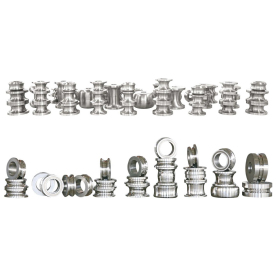[High-efficiency induction heating equipment]Revolutionizing Manufacturing: The Impact and Advantages of High-Efficiency Induction Heating Equipment on Industry Standards
News 2024-9-5

Revolutionizing Manufacturing: The Impact and Advantages of High-Efficiency Induction Heating Equipment on Industry Standards
Induction heating is a method that heats electrically conductive materials through electromagnetic induction. A high-frequency coil generates an alternating magnetic field that induces electric currents in conductive materials, resulting in rapid heating. This process stands in stark contrast to traditional heating methods like gas flames and conventional ovens, which may require longer heating times and lead to inefficiencies.
One of the most significant advantages of high-efficiency induction heating equipment is its remarkable energy efficiency. Unlike conventional heating methods that can waste energy through thermal conduction, induction heating provides targeted heat generation, minimizing heat loss. This characteristic is particularly critical for industries seeking sustainable operations and a reduction in energy costs. By using high-efficiency induction heating, manufacturers can reduce their energy consumption by up to 80%, ultimately leading to substantial savings in operational expenses.
Moreover, rapid heating times associated with induction heating technology can significantly enhance production rates. Traditional methods often require preheating and cooling periods, slowing down the manufacturing process. High-efficiency induction heating equipment, with its ability to heat materials quickly and uniformly, can streamline production and reduce cycle times. This efficiency is especially valuable in high-volume operations, where reducing lead time can give manufacturers a competitive edge in the market.

Revolutionizing Manufacturing: The Impact and Advantages of High-Efficiency Induction Heating Equipment on Industry Standards
The versatility of induction heating technology also contributes to its wide applications across various industries, including automotive, aerospace, metalworking, and textiles. For instance, in the automotive industry, induction heating is used for tasks ranging from heat treatment of metal components to the bonding of dissimilar materials through induction welding. In the metalworking sector, it is employed for processes such as annealing and brazing, where controlling temperatures is crucial to ensure the integrity of the final product.
Food processing is another area where high-efficiency induction heating equipment is gaining traction. Induction heating can be used to effectively pasteurize or cook food products while minimizing energy usage and preserving the nutritional value of the food. This application not only meets the efficiency goals of manufacturers but also aligns with health and safety standards in food production.
Maintenance and operational costs represent another area where high-efficiency induction heating equipment outshines traditional heating methods. Induction systems typically require less maintenance due to fewer moving parts and robust construction, which translates to lower downtime. Furthermore, the closed-loop nature of induction heating provides a safer working environment, reducing risks associated with open flames or high-temperature surfaces.

